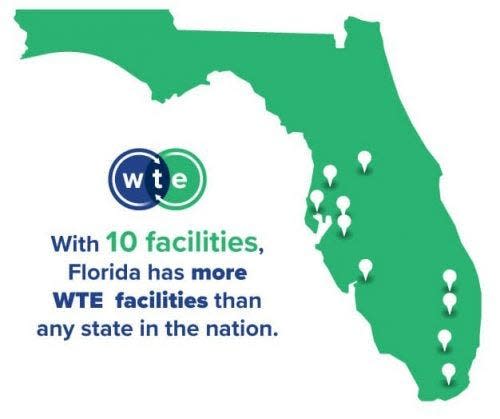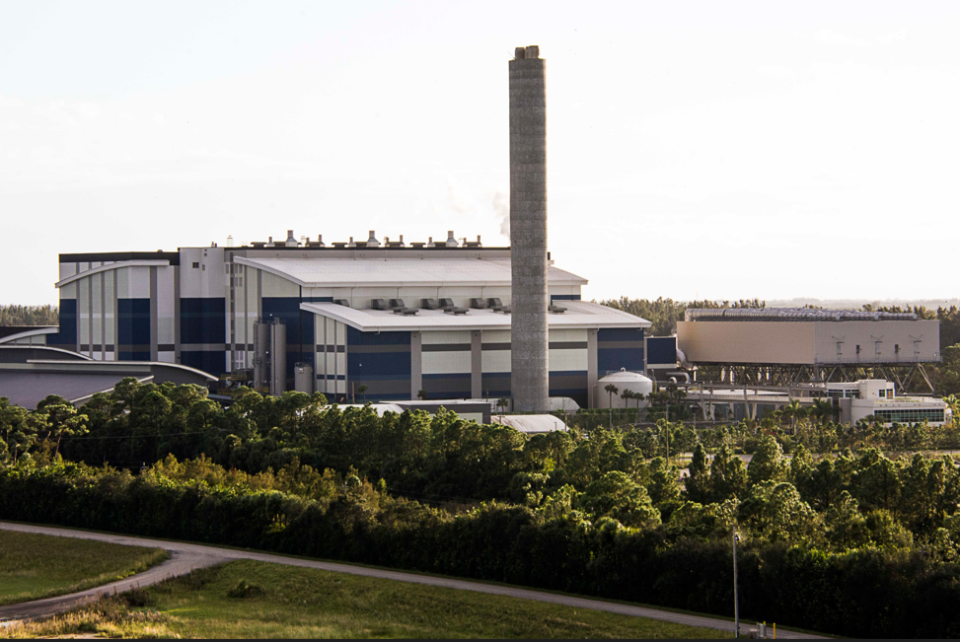SWA: Proposed new emission rules could force us to close our two Palm Beach County plants
Stricter air emission standards could cause Palm Beach County to shutter its billion-dollar waste-to-energy plants, forcing it instead to truck its waste to landfills outside the county.
At issue are new standards proposed by the U.S. Environmental Protection Agency, standards that are “unachievable,” according to Dan Pellowitz, executive director of the county’s Solid Waste Authority. Pellowitz detailed the impact of the new regulations at a recent SWA board meeting.
No state in the country processes more solid waste through waste-to-energy plants than Florida. They divert waste from landfills to generate energy from the combustion of municipal solid waste. In addition to the two in Palm Beach County, others are located in Miami-Dade, Broward, Hillsborough, Lee, Pinellas and Pasco counties. The city of Tampa also operates one.

“This looks like an effort to make it impossible to operate waste-to-energy plants in this country,” Pellowitz said. “It is not what the rest of the world is doing. This is a major step backwards.”
The EPA announced the proposal in early January 2024 for large facilities like the ones in Palm Beach County that burn municipal solid waste. If finalized, EPA says the updated standards would reduce emissions of nine pollutants, including smog- and soot-forming sulfur dioxide and nitrogen oxides, by approximately 14,000 tons per year, improving air quality for overburdened communities living near these facilities.
Pellowitz said there is no scientific evidence demonstrating health risks associated with waste-to-energy facilities. According to the Florida Waste to Energy Coalition, waste-to-energy is a technologically advanced means of waste disposal that reduces greenhouse gases — particularly methane — by eliminating emissions from landfills. In Florida, waste-to-energy annually reduces greenhouse gas emissions by more than 6.5 million tons of CO2.
The EPA defended the changes in a press release, saying they are needed to advance environmental justice by improving air quality in minority communities overburdened by pollution.
After accounting for compliance costs, EPA estimated the net present value of health benefits from the proposed rule, because of reductions in particulate matter and ozone, to be up to $14 billion (in 2022 dollars) over 20 years. EPA, in an email to The Palm Beach Post, said it believes the benefits from the rule will far outweigh the costs associated with compliance.
MORE: County Commissioners reject 2 western landfill sites, hope to get free site in swap
MORE: County Commissioners reject 2 western landfill sites, hope to get free site in swap
Fifty-seven facilities in the U.S. that process a minimum of 250 tons per day of municipal solid waste would be affected, including the two in Palm Beach County along with eight others in Florida. Nearly 4 million Americans live within three miles of these large facilities, which are disproportionately located in low-income communities and communities of color, according to EPA.
Where are the SWA plants in Palm Beach County?

Pellowitz, however, said EPA grossly underestimated the increased annual operating costs that the waste-to-energy plants would incur. They would force the expenditure of more than $60 million. For the SWA, one of its plants may be closed by 2034, and it makes no sense to invest heavily in it now, Pellowitz noted, adding the two waste-to-energy plants operate within acceptable emission limits.
The two Solid Waste Authority (SWA) plants in Palm Beach County are on Jog Road just west of West Palm Beach and Riviera Beach. They process about 2 million tons of municipal solid waste a year. They generate enough electricity to power more than 60,000 homes. The first plant opened in 1989; the second in 2015 (the last waste-to-energy plant built in the U.S.)
According to the SWA, among residents living within three miles of the plants, 36% are Black and 43% white but Pellowitz noted that when the decision was made in the 1980s to locate the SWA’s facilities, the demographics were vastly different. The three-mile radius was 78% white and 20% Black when the first plant opened in 1989.
The SWA spent more than $1 billion to build the two facilities. It says the one that opened in 2015 is “the most advanced, efficient, cleanest and greenest waste-to-energy power plant in the world.”
Joe Kilsheimer, executive director of the Florida Waste to Energy Coalition, an advocacy group that represents the operators of waste-to-energy plants in the state, said he fears that EPA has already made up its mind and intends to adopt the proposed rules without any changes.
"I am not hopeful. We have reached out to EPA to give our side but they do not seem to want to hear from us," he said, noting that the EPA has refused to even extend the comment deadline of March 25. He and Pellowitz said they need more time to document the adverse impacts of the rule changes.
Kilsheimer said his state coalition filed a Freedom of Information Act request with the EPA to obtain data used to propose its changes. The agency refused to give it any information, he said.
Both Kilsheimer and Pellowitz questioned the EPA's authority to propose any changes without first assessing waste-to-energy plants to determine if their current emissions pose a health risk. That has not been done, they noted, and should be done before the agency considers new rules.
One of the rules Pellowitz questions is a requirement that all monitors operate 24 hours a day, seven days a week. Pellowitz called the requirement unrealistic, noting that monitors will sometimes go offline. They are quickly repaired, he noted, but to comply, the SWA would have to spend more than $800,000 to buy monitors to back up the existing ones.
“It is something we would have to do,” Pellowitz said. “I can’t willingly allow the plant to operate in violation. My concern is that we will sustain unavoidable violations.”
What are the next steps for the SWA?
Pellowitz said it would be very costly for the SWA to sue the EPA on its own but he noted the agency would consider joining litigation if, for example, a national trade organization or the state challenged the EPA. The SWA also will call on Florida’s congressional delegation for help.
A spokeswoman for the EPA encouraged public comments to be made to its public docket. She said all comments will be considered when developing the final rule.
Mike Diamond is a journalist at The Palm Beach Post, part of the USA TODAY Florida Network. He covers Palm Beach County government and transportation. You can reach him at mdiamond@pbpost.com. Help support local journalism. Subscribe today.
This article originally appeared on Palm Beach Post: New emission rules could force SWA to close its waste-to-energy plants

